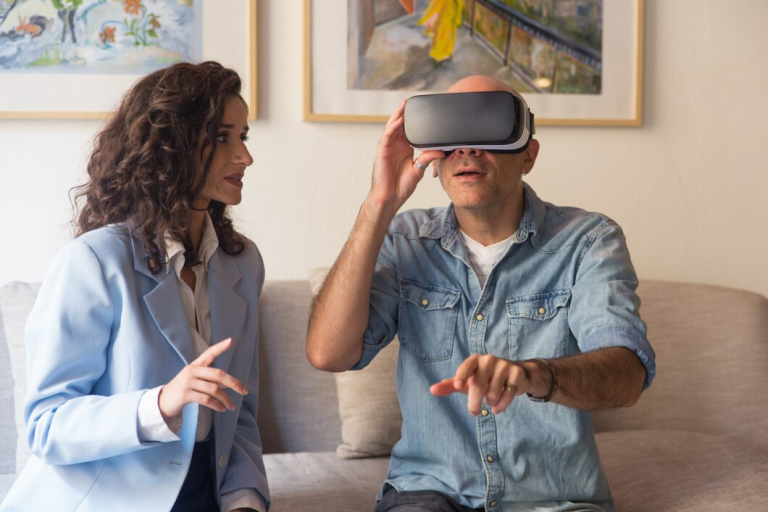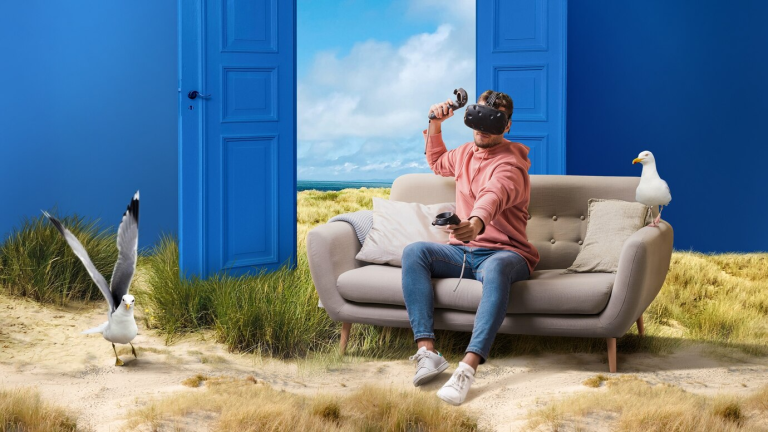Bringing Outdoor Spaces to Life with Virtual Reality
Traditionally, landscape architects relied on 2D drawings, physical models, and static 3D renderings to communicate their designs. However, Virtual Reality (VR) is revolutionizing landscape architecture by providing fully immersive, real-time experiences that help designers, clients, and developers visualize outdoor spaces like never before.
By integrating VR into landscape architecture, professionals can:
- Walk clients through fully interactive gardens, parks, and urban green spaces before construction even begins
- Experiment with plant growth simulations, seasonal changes, and lighting conditions
- Test different materials, textures, and spatial arrangements in real-time
- Improve collaboration between architects, engineers, and city planners
With urbanization increasing and climate concerns shaping future developments, VR is becoming an essential tool for landscape architects to create more sustainable, functional, and visually stunning outdoor environments.
How is VR Transforming Landscape Architecture? Let’s explore the key benefits and applications.
1. Immersive Visualization for Clients and Stakeholders
Why It’s Important:
One of the biggest challenges in landscape architecture is helping clients visualize the final outcome of a project. Traditional renderings lack depth and realism, making it hard to convey scale, textures, and environmental interactions.
How VR Solves This Challenge:
- Fully immersive walkthroughs – Clients can explore the space at eye level, experiencing the layout, pathways, and greenery as if they were already built.
- 360-degree perspectives – Unlike static renders, VR allows full spatial exploration, giving clients a realistic sense of depth and proportion.
- Real-time adjustments – Clients can request instant modifications (e.g., swapping plant species, adjusting seating areas, or changing paving materials).
Example:
A landscape firm designing a public park used VR to help city officials “walk through” the proposed space, leading to faster project approvals and funding allocation.
Best Practice: Use VR walkthroughs early in the design process to gain client buy-in and reduce costly design changes.
2. Simulating Environmental Conditions & Sustainability Planning
Why It’s Important:
Climate change and environmental factors play a critical role in landscape design. VR allows architects to test different scenarios and optimize sustainability strategies before implementation.
VR Applications for Environmental Simulation:
- Weather impact analysis – Simulate rainfall, wind flow, and sun exposure to design resilient landscapes.
- Seasonal plant growth modeling – Predict how vegetation will change over time, ensuring plants are placed for optimal growth and shading.
- Stormwater management testing – Use VR to model water runoff and drainage systems, preventing future flooding issues.
Example:
A university campus used VR to model tree placement for natural shading, reducing cooling costs by 20% in adjacent buildings.
Best Practice: Integrate sustainability-focused VR tools to design landscapes that are energy-efficient and climate-resilient.
3. Enhancing Urban Planning & Public Space Design
Why It’s Important:
Urban planners must balance functionality, accessibility, and aesthetics when designing public spaces. VR provides an accurate representation of how people will interact with these environments.
VR Applications in Urban Landscape Design:
- Pedestrian flow simulation – Analyze how people move through parks, plazas, and city streets to optimize layouts.
- Accessibility testing – Ensure ADA compliance by simulating how different user groups (wheelchair users, cyclists, elderly) navigate the space.
- Traffic and mobility analysis – Integrate public transport routes, bike lanes, and walking paths to enhance urban connectivity.
Example:
A Bay Area city council used VR to simulate a redesigned waterfront area, helping planners refine the pedestrian-friendly layout and transportation access points.
Best Practice: Use VR simulations in public meetings to gain community feedback and refine urban designs collaboratively.
4. Streamlining Collaboration Between Designers & Engineers
Why It’s Important:
Landscape architecture is rarely a standalone effort—it requires coordination with architects, civil engineers, ecologists, and developers. VR enables seamless, real-time collaboration between teams.
How VR Improves Team Collaboration:
- BIM & GIS Integration – Combine geospatial data with architectural models to ensure site feasibility.
- Virtual site visits – Teams can inspect terrain, elevations, and existing vegetation without being physically on-site.
- Instant design reviews – Stakeholders can meet in a shared VR environment, speeding up the decision-making process.
Example:
A multi-disciplinary team used VR to resolve conflicts between underground utility placements and landscape elements, avoiding costly rework.
Best Practice: Adopt cloud-based VR collaboration platforms to connect teams remotely and enhance coordination.
5. Reducing Costs & Avoiding Design Mistakes
Why It’s Important:
Revisions and mistakes in landscape design can be expensive, especially for large-scale projects like parks, resorts, and commercial developments. VR allows designers to detect potential issues before breaking ground.
VR for Cost Reduction:
- Identify drainage problems, uneven terrain, or space constraints early in the design process.
- Reduce physical model costs by using VR prototypes instead.
- Prevent miscommunications with clients and contractors, reducing costly last-minute changes.
Example:
A golf course developer used VR to test topographical changes and fairway placements, avoiding $500,000 in unnecessary grading work.
Best Practice: Use VR-based error detection to validate designs before construction, reducing budget overruns.
The Future of VR in Landscape Architecture
With continued advancements in VR technology, landscape architects can expect:
- AI-driven design recommendations – VR platforms suggesting optimal plant selections, layouts, and material choices based on environmental data.
- AR + VR integration – Mixed-reality applications allowing clients to view landscape designs overlaid onto real-world sites in real time.
- 5G-enabled VR collaboration – Faster data processing for seamless multi-user VR design sessions.
Final Thoughts: Why Landscape Architects Should Invest in VR
VR is no longer an optional tool—it’s becoming essential for firms looking to stay competitive and innovative. The benefits include:
- Improved client engagement through immersive walkthroughs
- More sustainable and climate-adaptive designs
- Better urban planning and public space development
- Enhanced collaboration across design and engineering teams
- Lower project costs by reducing errors and avoiding costly revisions
Looking to integrate VR into your landscape architecture practice? Contact VRchitects today to explore cutting-edge solutions for immersive outdoor design!






